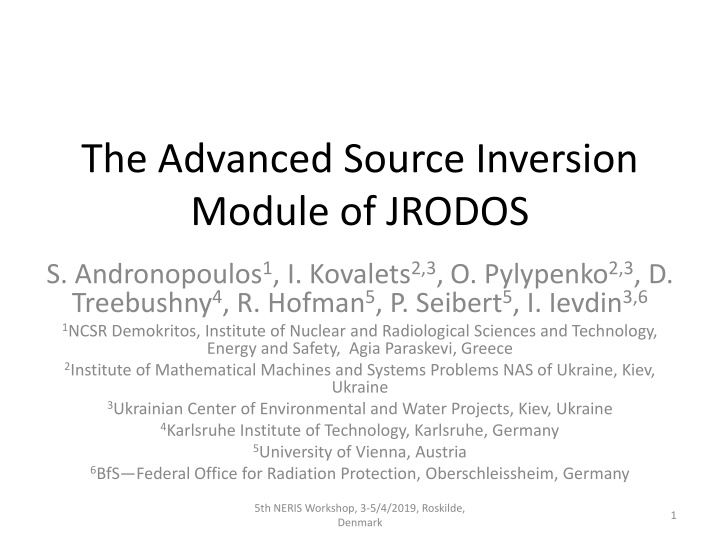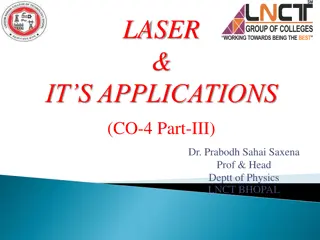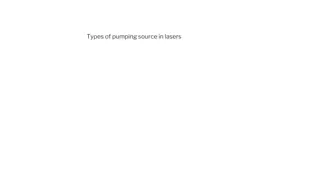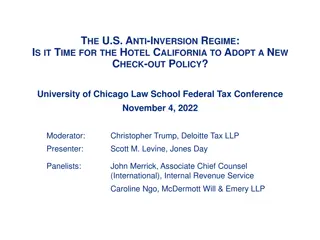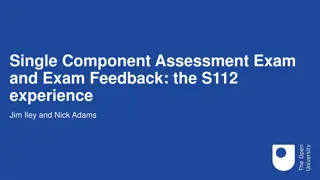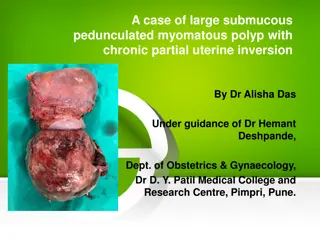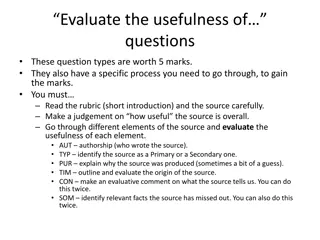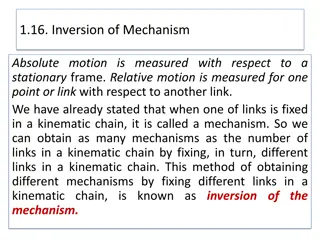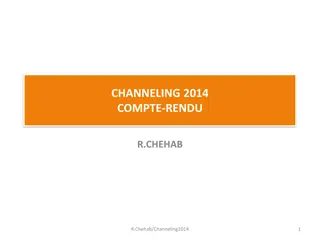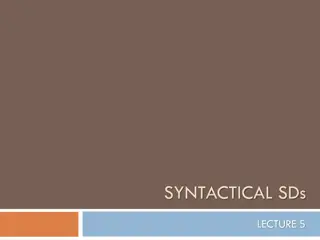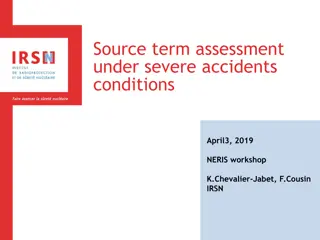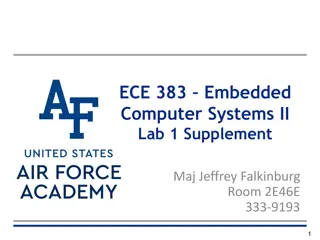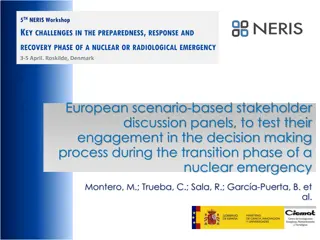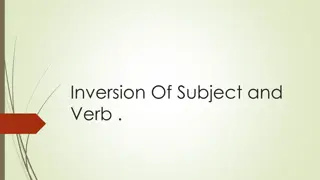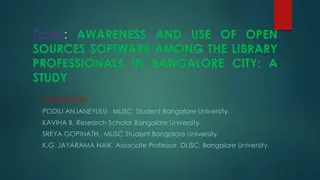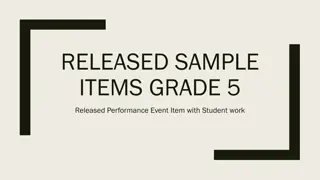Advanced Source Inversion Module of JRODOS Presentation at 5th NERIS Workshop
The presentation highlights the Advanced Source Inversion Module of JRODOS, focusing on its development, integration, and testing methodology for estimating emission rates and nuclide composition post a nuclear power plant accident. The test case involves a hypothetical accident at Rivne NPP in Ukraine, challenging due to the presence of noble gases, iodines, and aerosols. Artificial gamma dose rate measurements and meteorological data are used to assess the accuracy of the source term estimation. The dissemination of testing results took place at the 5th NERIS Workshop in Roskilde, Denmark.
Download Presentation

Please find below an Image/Link to download the presentation.
The content on the website is provided AS IS for your information and personal use only. It may not be sold, licensed, or shared on other websites without obtaining consent from the author.If you encounter any issues during the download, it is possible that the publisher has removed the file from their server.
You are allowed to download the files provided on this website for personal or commercial use, subject to the condition that they are used lawfully. All files are the property of their respective owners.
The content on the website is provided AS IS for your information and personal use only. It may not be sold, licensed, or shared on other websites without obtaining consent from the author.
E N D
Presentation Transcript
The Advanced Source Inversion Module of JRODOS S. Andronopoulos1, I. Kovalets2,3, O. Pylypenko2,3, D. Treebushny4, R. Hofman5, P. Seibert5, I. Ievdin3,6 1NCSR Demokritos, Institute of Nuclear and Radiological Sciences and Technology, Energy and Safety, Agia Paraskevi, Greece 2Institute of Mathematical Machines and Systems Problems NAS of Ukraine, Kiev, Ukraine 3Ukrainian Center of Environmental and Water Projects, Kiev, Ukraine 4Karlsruhe Institute of Technology, Karlsruhe, Germany 5University of Vienna, Austria 6BfS Federal Office for Radiation Protection, Oberschleissheim, Germany 5th NERIS Workshop, 3-5/4/2019, Roskilde, Denmark 1
Some background information Source-Inversion Advanced module developed and firstly integrated in JRODOS by the PREPARE project Estimation of time-dependent emission rate and nuclide composition from a NPP accident, based on gamma dose-rate (GDR) measurements (top- down approach) Methodology based on minimization of a cost function using Source-Receptor Functions (SRF) formulated on the ADM DIPCOT 5th NERIS Workshop, 3-5/4/2019, Roskilde, Denmark 2
Purpose of presentation Dissemination of testing of JRODOS-integrated SIA Methodology: Hypothetical NPP accident with a defined true source term Artificial GDR measurements by running ADM Assume a first-guess source term Run the SIA and examine closeness of the estimated source term to the true one 5th NERIS Workshop, 3-5/4/2019, Roskilde, Denmark 3
Test-case definition Hypothetical accident at Rivne NPP (Ukraine) Source term F1.DRSA-FK1 (JRODOS database) 27 nuclides: noble gases, iodines, aerosols particularly challenging case 5th NERIS Workshop, 3-5/4/2019, Roskilde, Denmark 4
Measurements Artificial GDR measurements generated by DIPCOT at artificial sensors around the NPP Distances of sensors from the NPP: 8-30 km Artificial meteorology: time-varying wind direction, constant wind speed, D- stability, no precipitation 5th NERIS Workshop, 3-5/4/2019, Roskilde, Denmark 5
Measurements (contd) Measurements imported in JRODOS database 5th NERIS Workshop, 3-5/4/2019, Roskilde, Denmark 6
SIA parameters Control the calculation of regularization terms They affect the SIA method performance What are the optimal values? ??,?= ?? ??? alpha_sigmab : Determines how closely the SIA converges to the first-guess (background) source term 5th NERIS Workshop, 3-5/4/2019, Roskilde, Denmark 7
What is the optimal ?? value? Run the SIA (calculate the source term) for several values of ?? For each source term calculate the Mean Absolute Error between observed and model- calculated GDR: MAE = Plot the curve MAE ?? The optimal ?? value is where the curve presents the maximum curvature (L-curve approach) optimal estimated source term ?? ?? ?? 5th NERIS Workshop, 3-5/4/2019, Roskilde, Denmark 8
1st test First-guess source term equal to 1/10th of the true one Optimal ??= 150 5th NERIS Workshop, 3-5/4/2019, Roskilde, Denmark 9
1st test results total releases 5th NERIS Workshop, 3-5/4/2019, Roskilde, Denmark 10
1st test results split 5th NERIS Workshop, 3-5/4/2019, Roskilde, Denmark 11
2nd test First-guess source term equal to 10 times the true one Optimal ??= 1 5th NERIS Workshop, 3-5/4/2019, Roskilde, Denmark 12
2nd test results total releases 5th NERIS Workshop, 3-5/4/2019, Roskilde, Denmark 13
2nd test results split 5th NERIS Workshop, 3-5/4/2019, Roskilde, Denmark 14
3rd test First-guess source term equal to true one but shifted in time 1 hr forward 5th NERIS Workshop, 3-5/4/2019, Roskilde, Denmark 15
3rd test optimal ?? Optimal ??= 3 5th NERIS Workshop, 3-5/4/2019, Roskilde, Denmark 16
3rd test results total releases 5th NERIS Workshop, 3-5/4/2019, Roskilde, Denmark 17
3rd test results timing 5th NERIS Workshop, 3-5/4/2019, Roskilde, Denmark 18
4th test First guess source term: increased by 10 times during 1st half of release, decreased by 10 times during 2nd half, in relation to true one 5th NERIS Workshop, 3-5/4/2019, Roskilde, Denmark 19
4th test -optimal ?? Optimal ??= 1 5th NERIS Workshop, 3-5/4/2019, Roskilde, Denmark 20
4th test results total releases 5th NERIS Workshop, 3-5/4/2019, Roskilde, Denmark 21
4th test results split 5th NERIS Workshop, 3-5/4/2019, Roskilde, Denmark 22
Conclusions In all simulated cases the estimated time- dependent source term was closer to the true one than the first guess The level of improvement varied between cases Test 1: estimated releases of aerosols and noble gases within a factor of 1.5 as compared to the true values; iodine release estimation not improved 5th NERIS Workshop, 3-5/4/2019, Roskilde, Denmark 23
Conclusions (contd) Test 2: estimated releases of all nuclide groups within a factor of 2 to 5 compared to true values (modest improvement) Test 3: timing of releases estimated correctly; magnitude of releases estimated within a factor of 1.5 to 2 compared to true values ( best case) Test 4: estimated releases improved; estimated ST RMSE = 1.05 1015 Bq/s; first-guess ST RMSE = 4.09 1015 Bq/s ( worst case) Future work: calculation of optimal values of parameters; unknown location of release 5th NERIS Workshop, 3-5/4/2019, Roskilde, Denmark 24
References I. Kovalets, I. Ievdin, R. Hofman, P. Seibert, S. Andronopoulos (2016) Description of software module for source term estimation using advanced method integrated in DSS RODOS , Report PREPARE(WP4)- (16)-04 Kovalets I. , Andronopoulos S., Hofman R. , Seibert P., Ievdin I. (2016) Advanced method for source term estimation and status of its integration in JRODOS . Radioprotection 51 HS2, S121-S124, doi:10.1051/radiopro/2016046 Kovalets I., Andronopoulos S., Hofman R., Seibert P., Ievdin I., Pylypenko O. (2018) Advanced Source Inversion Module of the JRODOS System . In: Agarwal R., Agarwal A., Gupta T., Sharma N. (eds) Pollutants from Energy Sources. Energy, Environment, and Sustainability. Springer, Singapore. pp 149-186 DOI: https://doi.org/10.1007/978-981-13-3281-4_10 5th NERIS Workshop, 3-5/4/2019, Roskilde, Denmark 25
Thank you very much for your attention! 5th NERIS Workshop, 3-5/4/2019, Roskilde, Denmark 26
